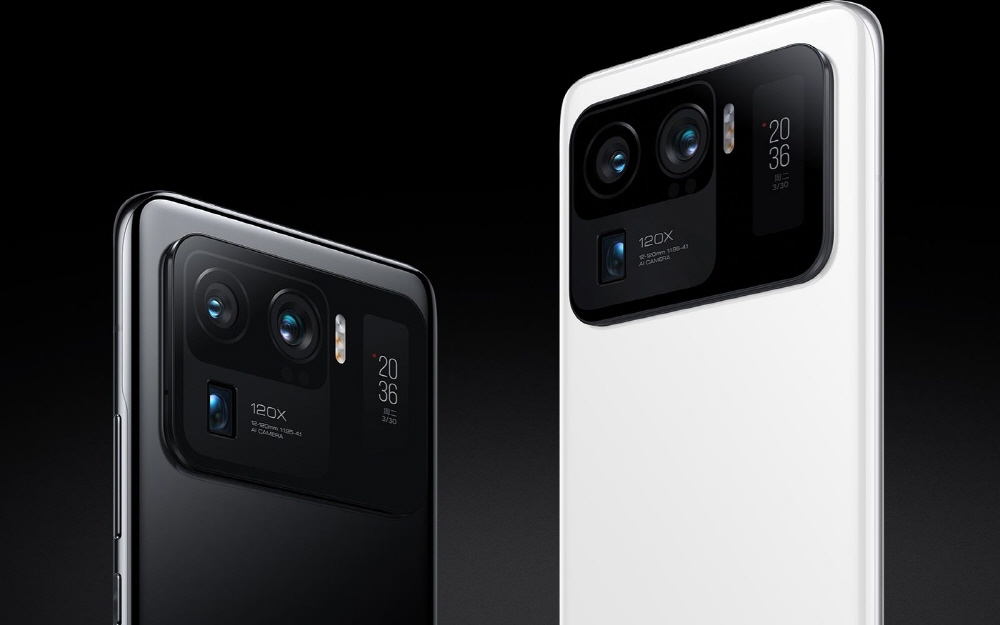
Xiaomi has announced new smartphones, the Xiaomi Mi11 Ultra and Mi11 Pro. These products are equipped with a 1/1.12-inch large image sensor, the largest in the history of a smartphone. In addition, Snapdragon 999, a Qualcomm processor, is mounted, and the display is 6.81 inches AMOLED, and its resolution is 3200×1440, and it supports 120Hz display. The touch sampling rate is 480Hz.
The biggest feature is that the ISOCELL GN2, a 1/1.12-inch 50-megapixel image sensor jointly developed with Samsung Electronics, is mounted on the rear camera. Compared to the 1/2.55-inch iPhone 12 Pro, it is 5 times larger than the Huawei P40 series 1/1.28-inch, which is obsessed with camera performance.
The larger the physical size of the image sensor, the larger the light-receiving area, which improves the camera quality. These products have increased the size of one pixel to 1.4 μm due to the enlargement of the image sensor, and achieved 2.8 μm per pixel with the quad pixel technology that integrates four adjacent pixels into one pixel.
Looking at the camera configuration, Mi11 Ultra has a 50-megapixel 1/1.12-inch wide-angle camera, a 48-megapixel 1/2.0-inch ultra-wide-angle camera that supports 128 degrees of view, and a 48-megapixel 1/2.0-inch telephoto camera that supports 5x optical. . In addition, the Mi11 Pro retains the wide-angle camera and adds an ultra-wide-angle camera with a 123-degree angle of view and a 5x optical telephoto camera.
At the presentation, Xiaomi also emphasized that the Xiaomi Mi11 Ultra equipped with a 1/1.12-inch sensor is superior in image quality compared to the RX100 VII, a compact digital camera equipped with a Sony 1-inch sensor. In addition, compared to the Mi11 Pro, Ultra appealed that all lenses of wide-angle, ultra-wide angle, and telephoto are the main camera-class performance.

The battery capacity is all 5,000mAh, and it adopts a new battery with high energy density. Fast charging supports 67W, and 67W fast charging is possible in wired as well as wireless. It is said that it can be charged 100% in 36 minutes for both wired and wireless. The thickness is suppressed to Ultra 8.38mm and Pro 8.53mm. In addition, Ultra has a 1.1-inch 126×296 AMOLED for selfie sub-display on the back, so it can always display notifications and time.

In addition, Ultra uses ceramic for its case, and both products use Gorilla Glass Victus to increase the durability against scratches and drops. While equipped with a high-performance SoC called Snapdragon 888, it focuses on cooling performance, and the body performance does not deteriorate even if you play for a long time, and it also supports IP68 waterproof and dustproof.
The price of Ultra is 5,999 yuan based on 8GB of RAM and 256GB of storage space, while the Pro is 4,999 yuan based on 8GB of RAM and 128GB.
In addition to the flagship model, Xiaomi also announced the mid-range models Mi 11 Lite 5G and Mi 11 Lite.
The main body color is 5 colors centered on the pastel series, and the price is based on Europe, with 6GB of RAM and 369 euros for storage space of 128GB for Lite 5G, and 299 euros for 6GB and 64GB of light.
The SoC installed in the 5G version is the Snapdragon 780G, which has just been announced by Qualcomm. This SoC uses a 5nm manufacturing process. In addition, the light put on the Snapdragon 732G. The biggest difference between the two models is whether it supports 5G and the difference in RAM and storage space in addition to SoC. Other than that, the basic performance, such as the display panel and the camera, are the same.
These products emphasize that they are also the lightest and thinnest among Xiaomi smartphones. The body weight is 157g for the light and 159g for the 5G. The thickness is also 6.81mm. Of course, the figure does not include the protrusion of the lens, but it appeals to the fact that the lens also maintains 1.77mm.
The display is AMOLED that supports 2400×1080 and 90Hz, and the color gamut covers DCI-P3, and supports 10-bit color and HDR10+ video. The touch panel sampling rate is 240Hz, and the front camera is a punch hole type and is mounted on the left.
The rear camera has a triple configuration. They are wide-angle, ultra-wide, and macro. The main camera is a 64 megapixel sensor and an F1.79 lens, with an ultra-wide angle of 8 megapixels and a macro of 5 megapixels.
The battery capacity is 4,250mAh and supports 33W quick charging. Biometric recognition uses a fingerprint sensor mounted on the side.
Xiaomi also announced Mi Smart Band 6, a smart band. The biggest difference from previous models is that the AMOLED display covers the front of the oval body, and the total screen display area is 1.6 times and the number of pixels is doubled.
In addition, it is possible to newly measure blood oxygen saturation SpO2, track detailed exercise along with the existing heart rate and accelerometer, and measure sleep respiration quality through sleep measurement. The main function, exercise measurement, corresponds to 30 types, and 6 types can be automatically identified. In addition, it is equipped with a 5 ATM water resistant, magnetic charging connector.
This product can be used on both Android and iPhone, and it can be used as a remote control for music or to receive smartphone alarms, while also supporting a long battery life of 2 weeks. The price is 44.99 euros.


